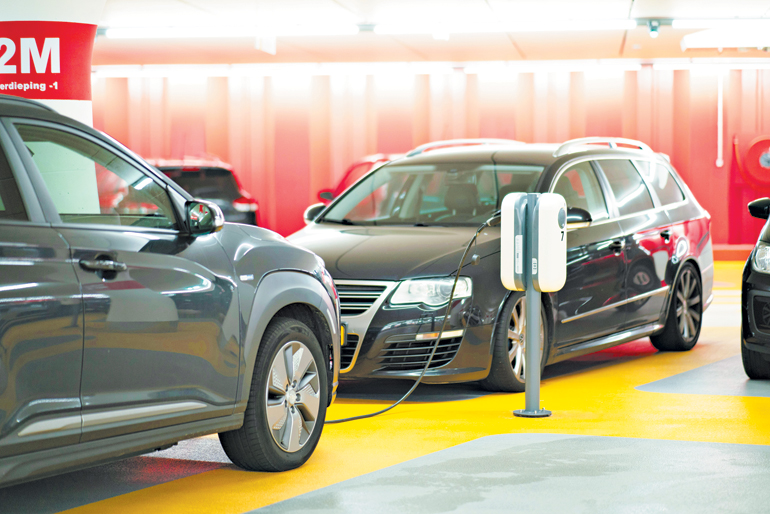Business
Towards a strong, vibrant car market

Fueled by growth and innovation, the Philippine automotive sector is poised for positive changes and new opportunities in the coming months.
Auto sales momentum is expected to increase this year, but this second quarter has seen strong growth, fueled by positive consumer demand, business confidence and stability in auto sales, according to an industry report.
The recent joint report of Chamber of Automotive Manufacturers of the Philippines, Inc. (CAMP) and the Truck Manufacturers Association (TMA) showed a significant increase in vehicle sales over the past three months, marking a recovery from the slow growth reported last March.
According to the data, the market saw a 22% increase in car sales in April, from 30,643 units in the same month last year to 37,314 units this year. The sales increase came mainly from several vehicle categories, including Asian Commercial Vehicles (AUV), which increased to 47.5% (6,816 units); sales of medium trucks up to 40.9% (355 units); sales of passenger cars up to 37.6% (10,069 units) and light commercial vehicles up to 10.7% (19,561 units).
Following this growth, car sales also increased in May to 5.5% (40,271 units). In addition, month-on-month car sales started to rise, after small declines in March and April.
“Improvements in supply and good consumer demand, coupled with an increase in automotive financial programs and expanded sales activities, helped increase sales month-on-month,” Rommel R. Gutierrez, president of CAMPI, said in a statement .
The CAMPI-TMA report further indicated an increase in commercial vehicle sales last May by 7.6%, AUV by 32.8% (6,769 units) and passenger car sales by 12% (10,967 units). Light trucks and buses also saw annual growth of 19.9% (531 units), while medium trucks rose 7.3%. However, light commercial vehicle sales saw a slight decline of 3.8% year-on-year, and heavy truck sales fell 22% in the same month.
Meanwhile, car sales in the month of June rose 7.6% year-on-year, with a total of 39,088 units sold compared to 36,211 last year. Passenger car sales grew rapidly by 17.8%, while commercial vehicles rose by 9.8%. However, monthly turnover in June decreased by 2% compared to May.
Overall, commercial vehicles dominated car sales growth during the first half of the year at 75%, while passenger cars remained at 25%. Sales of commercial vehicles increased from 151,567 units to 166,404 units, while passenger cars sold 59,875 units, compared to 50,848 units in the same period last year. Currently, the largest car sales units run the brands Toyota, Mitsubishi, Ford, Nissan and Suzuki.
In short, automotive vehicle sales in the country saw significant growth in the first half of the year, with 226,279 units sold, up 11.8% over the same period in 2023.
As the sector continues to grow, the automotive sector is experiencing remarkable growth, driven by strong local car sales. Industry professionals highlight trends that are changing the landscape of the automotive and mobility sector in the country.
Micromobility
Micromobility changes the way people move. Micromobility, which includes bicycles, electric scooters and electric bikes, is popping up on every street and corner, shaping a modern era of transportation.
According to global consultancy RSM Global, micromobility is redefining the automotive sector, offering easier and cheaper transportation, perfect for everyday transportation. These vehicles are small-scale vehicles used for transporting people and goods and are designed for short distances. It is also tailor-made for public transport, offering practical and environmentally friendly features that help reduce traffic and pollution in the metro.
The rise of micromobility creates a greater demand for environmentally friendly and sustainable mobility solutions. It can further revitalize public spaces into user-friendly cities, make areas more walkable, reduce carbon emissions and increase green spaces in the metro, the company said.
“It’s not just about diversifying products; it is a new look at the role of the automotive industry in urban mobility. This change leads to an increased focus on integrated mobility solutions that combine cars, public transport and micromobility,” the company’s report said.
Electric vehicles

The automotive world is rapidly evolving as various advancements in automotive technology become increasingly popular. Among these developments, electric vehicles (EV) take center stage. These vehicles are powered by battery technology and maximize the electricity stored in rechargeable batteries. They produce no CO2 emissions, improve air quality and are seen as more energy efficient and fuel efficient. As the world goes electric, many car companies and manufacturers are switching to electric vehicles.
In line with this positive outlook, electric vehicle adoption in the Philippines is gaining momentum, albeit at a slow pace. According to the latest Global Automotive Consumer Studies conducted by professional services firm Deloitte, 18% of Filipinos surveyed prefer hybrid electric vehicles (HEV), while 8% prefer plug-in HEV and 4% prefer battery -electric vehicles. The majority of respondents (66%) still prefer a gas or diesel engine, also known as an internal combustion engine (ICE).
Despite slow adoption, the Philippine EV market is gradually gaining popularity as a top choice for transportation. Electric vehicles have played a major role in boosting car sales, surpassing 10,000 units by 2023. This is a huge increase from the 1,000 units sold the previous year, as CAMPI outlined in a recent report.
Ride sharing services

Ride-share services are another well-known driver in the automotive world. Due to the shift in consumer demand, the younger generation in particular is more interested in ride sharing than leasing or car ownership, as RSM Global recently reported.
“This trend may lead to a decline in individual car sales, but opens up new revenue streams in service-based models,” the company said. “This could also lead to changes in vehicle design, prioritizing durability and adaptability for multiple users. Furthermore, the focus could shift to digital technologies for seamless access and user experience on shared mobility platforms,” the report said.
For the Philippines, taxi services and apps have become the preferred form of public transportation, providing a more convenient and safer alternative to traditional transportation. Combined with technology and affordability, these services make transportation easier for daily commutes and also increase business efficiency. Grab dominates the ride-hailing market, with extensive services including food delivery and digital payments. Other popular services include Angkas, Move It, JoyRide and Lalamove.
Moving forward
Looking ahead, the automotive industry is at a pivotal point, with continued growth, innovation, changing consumer demand and technological advancements – all coming together to redefine vehicles as more than just a means of transportation, but arguably a necessity in life. The market will see steady growth in the coming months, providing more opportunities for the industry to flourish and prosper in the ever-evolving landscape.
At the beginning of the year, the local auto industry targeted sales of 468,300 units, but remains confident of reaching 500,000 units before the end of the year. With new models coming out and more innovative releases in the lineup, the outlook for the industry looks bright. — Angela Kiara S. Brillantes







